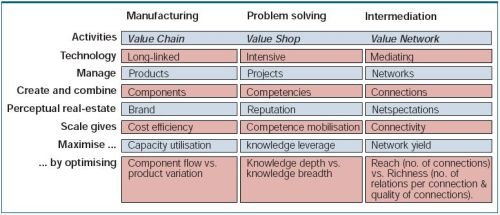Helpers of early stage startups – incubators, accelerators, angels and advisors – sleep good at night. There is something samaritan about what they do. They serve the bottom of the economic pyramid on which our society rests. They facilitate jobs, and in turn taxes. Some get wealthy and part is poured back in to new ventures, jobs and taxes. A virtue indeed. Yet there is a dilemma. While high-end markets yields and numbers make the deal, the Startup Samaritan migrate towards helping “grown-ups” at the expense of startups. The cure: startup methodology.
While I was studying and working my own market research practice, I had the pleasure to work with a couple of fine venture finance agents. I did customer interviews, and created business plans and investor presentations. It was first when I got the assignment to carry out a method with the goal of evaluating risk in early-stage ventures that I understood the dilemma.
What I quickly learned was that there is a minimal quantifiable track record within a startup. Accordingly, analytic models get dismissed in favor of qualitative variables such as team, customer insight and technology. For a couple of reasons I believe that this creates a dilemma to the Startup Samaritan.
- The time utilized in facilitating a startup is pretty much equal to that of facilitating a grown-up. Risk is lower and more predictable at the later stages. The stake and respectively the compensation is often higher. For logical reasons the Samaritan’s focus gradually migrates towards grown-ups. High-end markets yield.
- With the theory of Disruptive Innovation, authors argue that most companies force teams to develop detailed financial estimates way too early, when their accuracy will necessarily be low. That using metrics such as net present value (NPV) or return on investment (ROI) as rank-ordering tools to make decisions is counterproductive [i]. Technological knowledge and qualitative unpredictability might cause a great headache to MBA scholars. Naturally such samaritans seek to utilize their knowledge and go after what is quantifiable.
Instead, early startup formation requires an understanding of entrepreneurial patterns – talking failure as well as success. Methodologies such as Customer Development and Lean Startup identify and learn from common challenges that occurs in startups and then describe methods that aid in overcoming such challenges. In exchange for meter-long spreadsheets, they embrace so-called Startup Metrics that are trackable, actionable and drive better product and marketing decisions. Of course you can not ignore financial data, but focusing on the assumptions behind the numbers is meaningful when there is no such track record. Dedication is more likely when motivation, knowledge and methods are aligned.
The bottom line:
- Focusing on patterns [through startup methodologies] instead of numbers enable entrepreneurs to better manage uncertainty and their good samaritans to sleep even better in the future.
- Principles of Disruptive Innovation can help explain why startup investors as well as entrepreneurs would want to educate in startup methodologies.
Did you like this post? Please, feel free to subscribe or follow me on Twitter.
[i] Mapping Your Innovation Strategy, by Scott D. Anthony, Matt Eyring, and Lib Gibson

